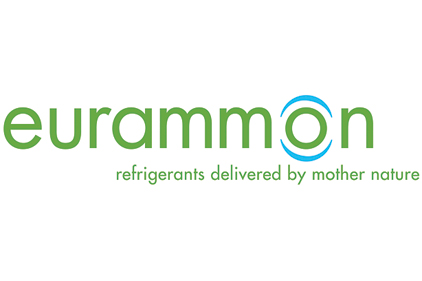 Interest in using so-called natural refrigerants continues to grow, especially when it comes to the refrigeration of food.
Interest in using so-called natural refrigerants continues to grow, especially when it comes to the refrigeration of food.“The use of ammonia, carbon dioxide, and hydrocarbons can make a major contribution to improving a company’s environmental balance,” explained Georges Hoeterickx, member of the board at Eurammon, a joint European initiative of companies, institutions, and individuals who advocate an increased use of natural refrigerants. “Natural refrigerants are environmentally friendly, as they have either no or only a negligible global warming potential. In addition, refrigeration systems working with natural refrigerants are not only energy efficient, with a positive effect on the carbon balance, they also result in lower overheads.”
The following examples illustrate how companies use natural refrigerants to keep food cold and fresh.
Distribution Center
With more than 60,000 employees in 900 sites spread across 100 countries, the Kühne + Nagel Group is one of the largest logistics companies in the world. The group’s distribution center in Wellingsborough, England, is responsible for the supply chain management of frozen and refrigerated goods for British food and drink wholesalers.
The refrigeration design team from Star Refrigeration designed a high-efficiency refrigeration system for the group that runs on ammonia (NH3) as refrigerant; this system was installed in an existing warehouse building in 23 weeks. The finished complete solution takes care of the chilling and deep-freezing sections of the warehouse, which has 17 truck loading ramps.
The refrigerating system with an output of 500 kilowatts keeps the deep-freezing section at a temperature of -25˚C (-13˚F). The chilling section works at a temperature of +2˚C generated by 650 kilowatts. The system consists of a two-stage ammonia plant with a hot gas defrosting system of the evaporators. The system comprises a two-stage pump circulation ammonia plant with hot gas defrost to the evaporators. The compact system features two low- and two high-stage compressors, a high-stage surge drum, and two evaporative condensers. The innovative solution reduced Kühne + Nagel’s operating costs by around $77,700 compared to a conventional pump system.
Fruit Trader
For more than 125 years, Obst Gößl based in Puch, Austria, has been trading fruit. The fruit wholesaler takes apples into controlled atmosphere (CA) storage straight after harvesting. To this end, the oxygen level is reduced in the cold cells of the CA warehouse. At the same time, the carbon dioxide level is raised and the apples are allowed to “hibernate” at temperatures of 1 to 2˚C and high humidity levels. This storage technology ensures that apples can be supplied “fresh from the tree” all year round.
In 2009, the company started to plan an expansion of its storage capacities. The intention was to erect three additional CA warehouses, each with a surface area of 100 square meters and measuring 10 meters in height, to increase CA storage capacity from 250 metric tons to altogether 300 metric tons. Furthermore, a new additional high rack warehouse was planned to provide space for about 6,000 large boxes, each of them providing a filling capacity for 300 kilograms of apples.
This also entailed extending the existing refrigeration system. To this end, Johnson Controls installed a refrigeration system that started operation in 2010 with ammonia. An ethylene-glycol-water mixture is used as a secondary refrigerant. To warrant a constant temperature between 1 and 3˚C maximum in the high bay warehouse, Johnson Controls installed brine circulation air chillers in the area of the warehouse ceiling panels. In addition, a double ventilation system consisting of two speed-controlled ventilators fitted under the roof permits free cooling.
Moreover, after ozonation, these ventilators are also responsible for purging the rooms and extracting the used air from the warehouse by means of negative pressure. Goods are taken into and removed from the warehouse by means of fully automatic conveyor systems at six openings in the building. At these access points, additional air curtains prevent the cold air from leaving the building, thus boosting the energy efficiency of the system. Two adiabatic glycol recoolers installed on the roof of the building are responsible for heat rejection for the whole system.
To ensure that the three new CA warehouses can be operated independently of each other, Johnson Controls fitted three brine/air coolers in every cold cell, each with its own brine circuit and own brine pump. Eight brine/air coolers were also installed in the aisle zone between the warehouses and in the manipulation section in front of the warehouse. These brine/air coolers keep the temperature at a constant level of between 2 and 4˚C, thus ensuring adequate chilling of the apples in all parts of the warehouse.
Baked Goods
Glockenbrot Bakery GmbH & Co. produces baked goods in the industrial bakery in Bergkirchen near Dachau, Germany. Environmental protection was a central issue when the industrial bakery was being planned. This is why the company opted for a refrigeration system with an NH3/CO2 cascade system to cover refrigeration and deep-freeze requirements. The combined NH3 system also chills the secondary refrigerants brine and iced water. The cold brine is applied to the air chillers in the pre-chilling rooms; it is chilled in the ammonia system by plate heat exchangers with an output of 700 kilowatts. The evaporators used in the deep-freeze rooms have integrated warm brine defrosting that uses the waste heat of the system, thus increasing its energy efficiency. This solution also saves the costs that would otherwise be generated in defrosting the deep-freeze evaporators and the air chillers in the refrigeration circuit, for example with electric defrosting solutions.
Waste heat not used for this process is dissipated with a recooler with a heat output of 100 kilowatts. The warm brine for defrosting is generated by the oil cooler. The system has six defrosting coils each with 22 kilowatts. All together, 16 defrosting points are served. Cold brine is used for the corresponding process in the deep-freeze section. The ammonia condenser has eight ventilators with step control and two with frequency control.
Supermarket System
For 15 years now, the Danish Fakta supermarket chain and suppliers have worked at improving the energy efficiency of the refrigeration systems in its stores. Fakta changed over to carbon dioxide for refrigerant in 2007, and has meanwhile installed 61 transcritical refrigeration systems in 378 stores. Another 40 of the systems focused on optimized part load were installed by the end of 2010. The relatively small systems operate with an output of 9 kilowatts in the deep-freeze range and 28 kilowatts in the medium temperature range. Today all systems are supplied as standardized five-unit combined solutions.
They all have the same refrigeration appliances, packs, and gas coolers; moreover, they all work with the same output. Only the type of installation can vary from one place to the next. All systems work with a booster system with gas bypass. They consist of two compressors, one with an inverter for the refrigeration range and two compressors without an inverter for the deep-freeze range.
They are controlled by the Adap-Kool pack controller system by Danfoss. A controller also checks the pressure in the gas cooler to reach the optimum COP in the system. An electric valve regulates the receiver pressure at the same time. A flexible chilling point and overheating regulator permit energy optimization of the whole system. Application-specific presets permit swift adaptation to different refrigeration appliances and rooms. More than one evaporator can be controlled depending on the application. A study of the energy consumption in the first 10 installed systems resulted in energy savings of around 10 percent compared to the HFC plants that were usually found in the stores through to 2007.
For more information, visit www.eurammon.com.
Publication date: 05/14/2012









